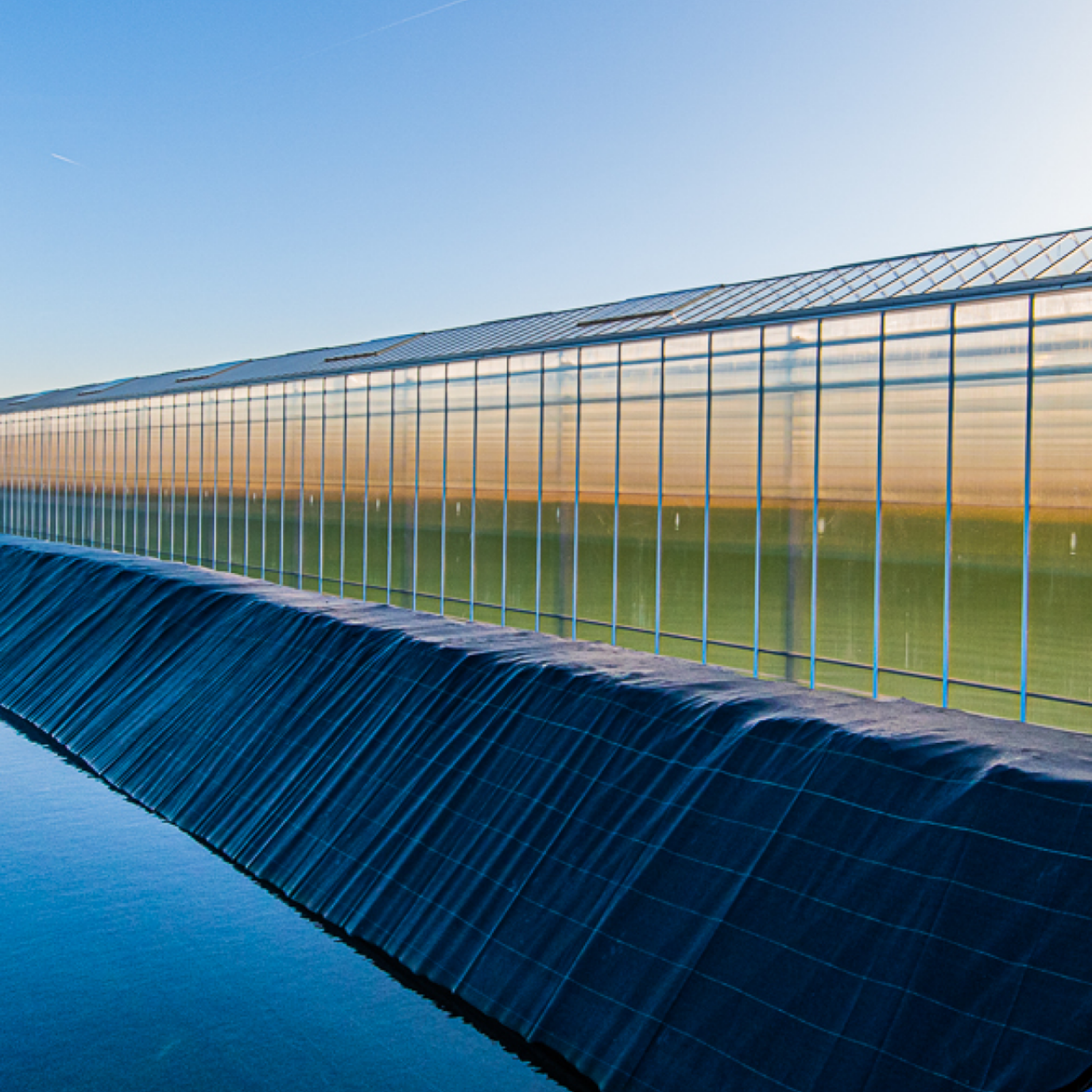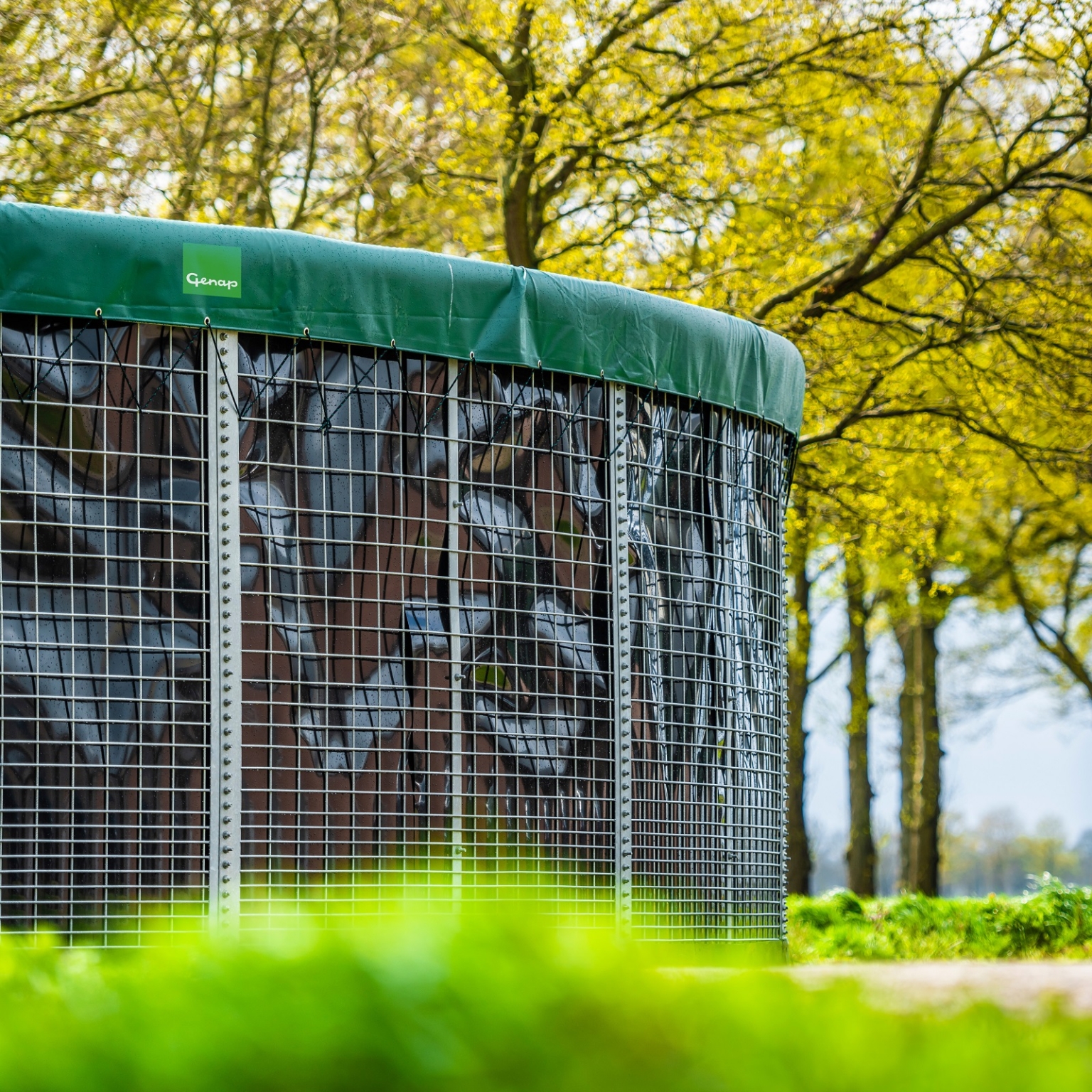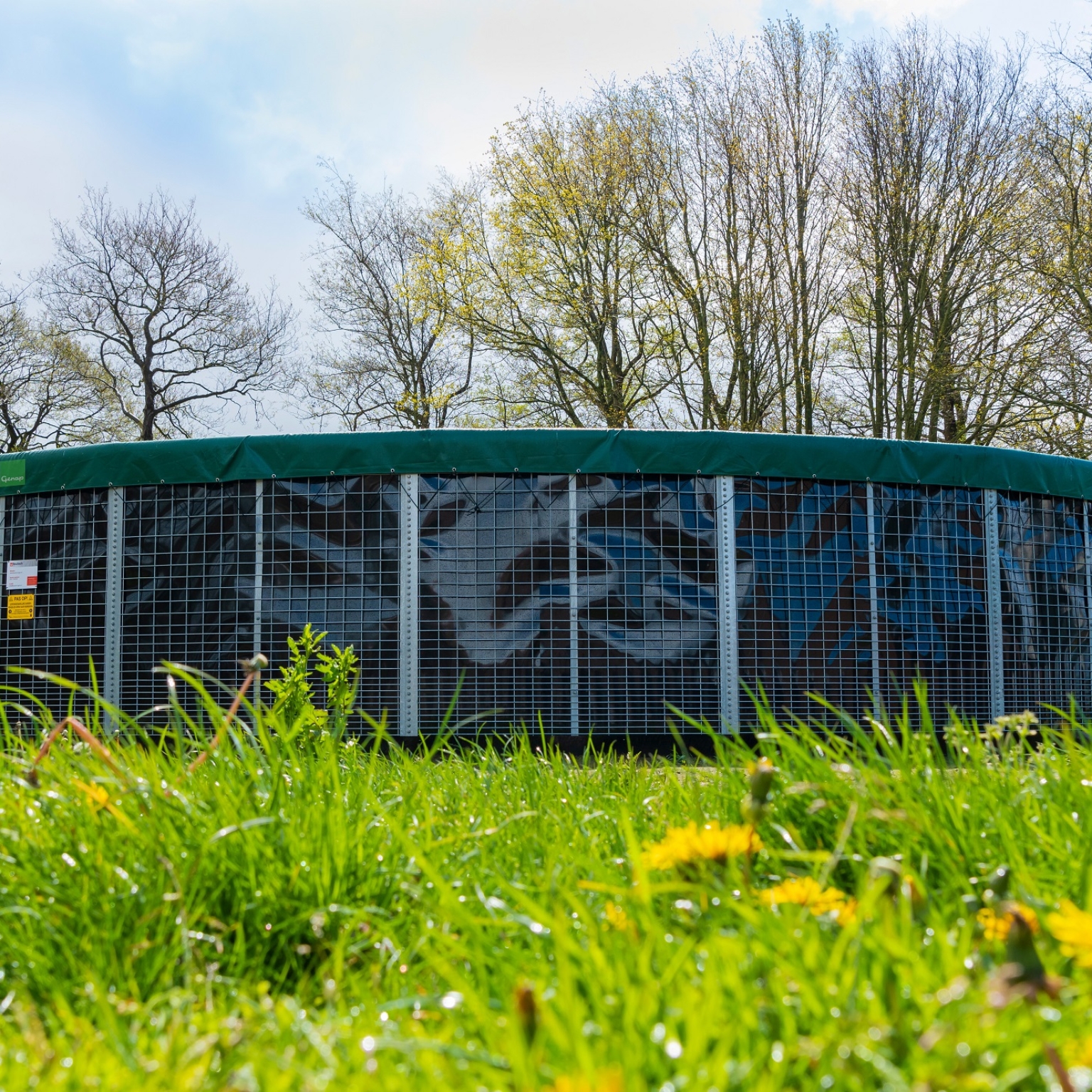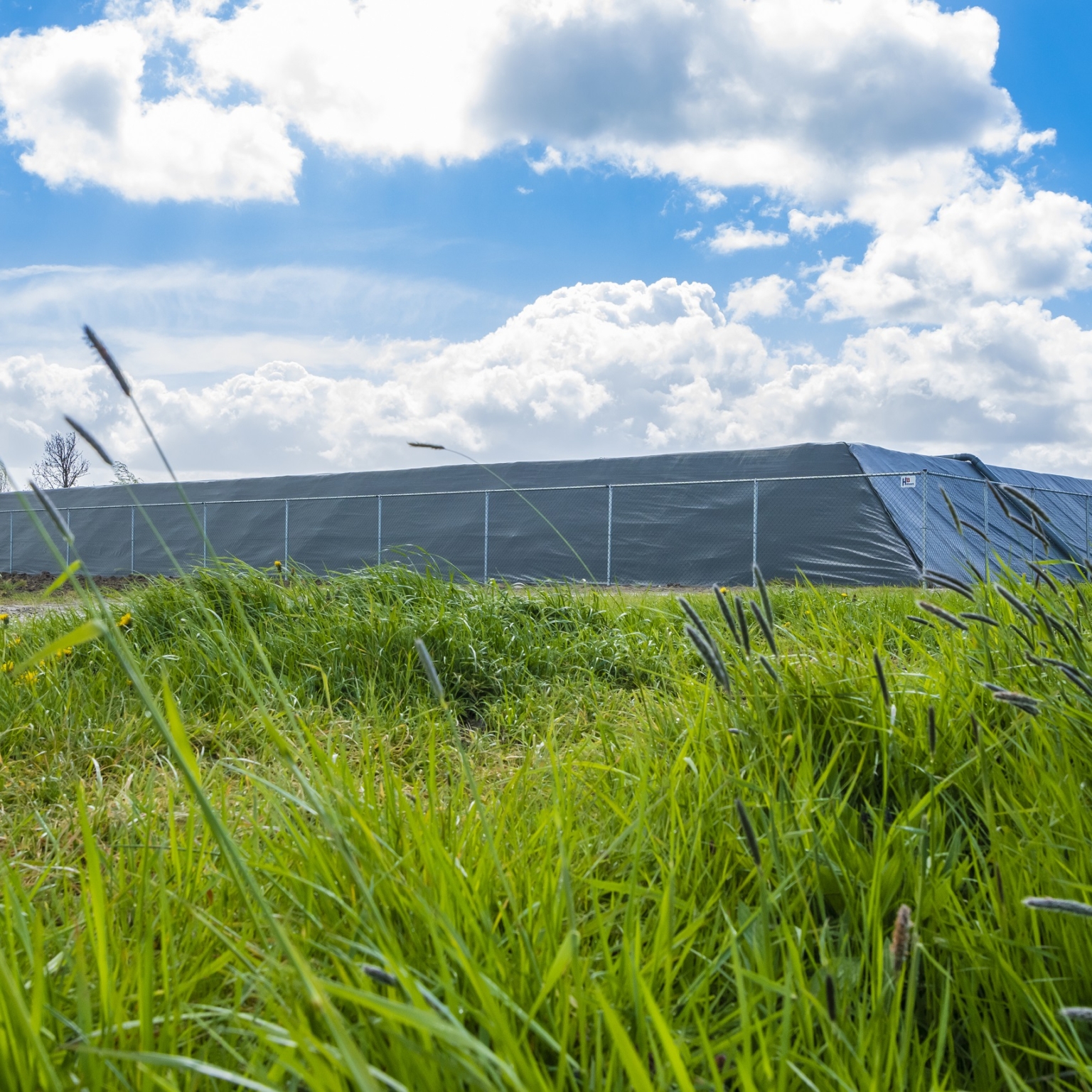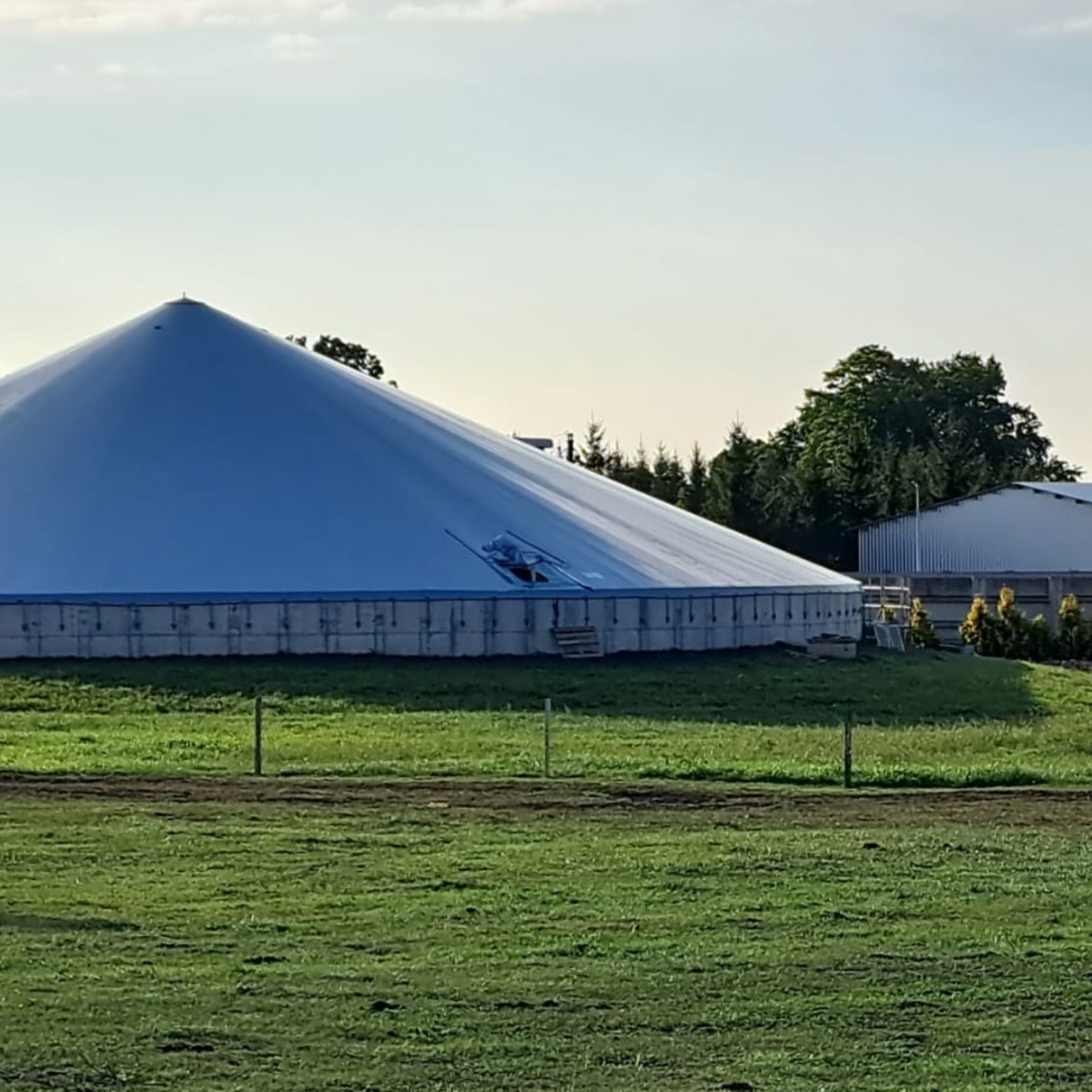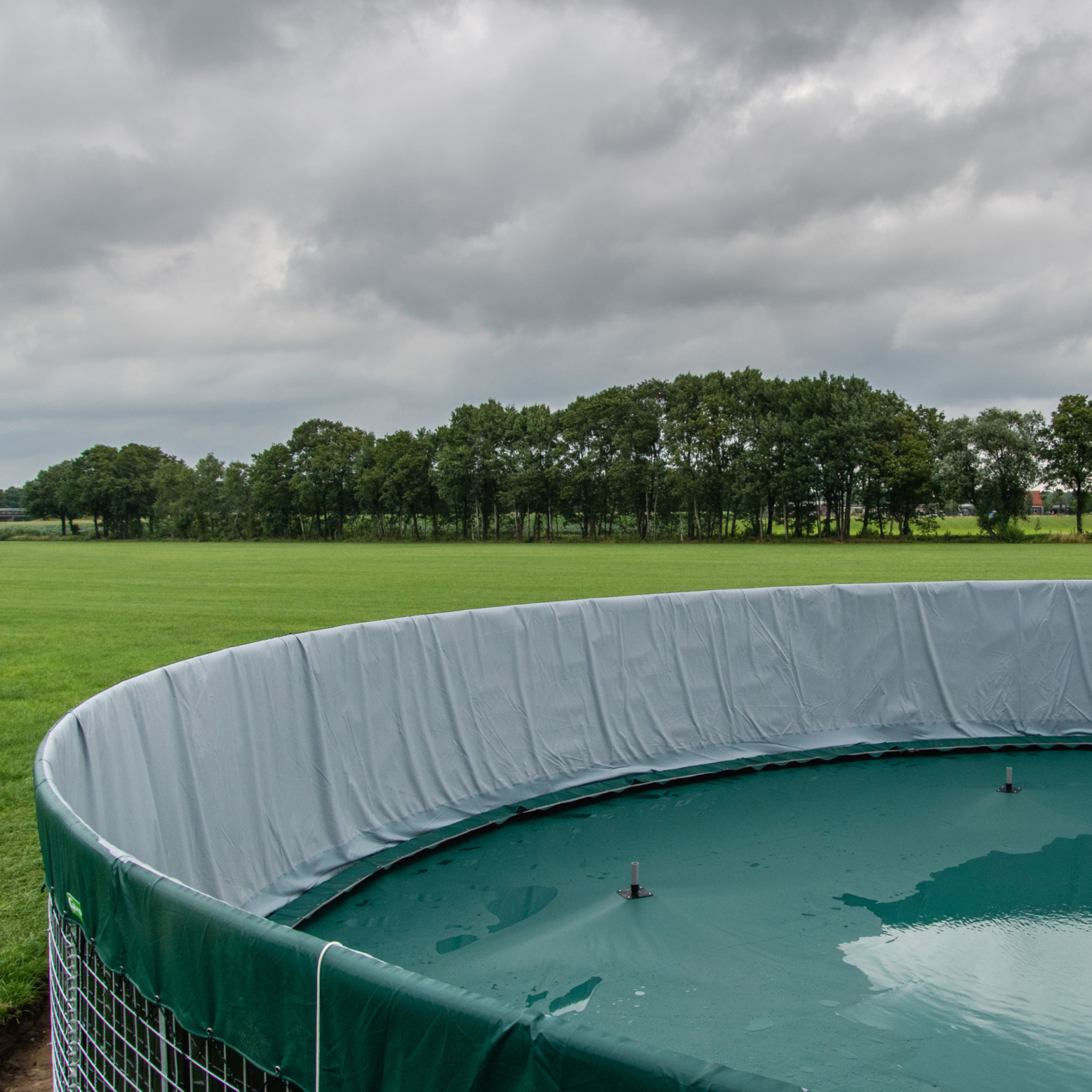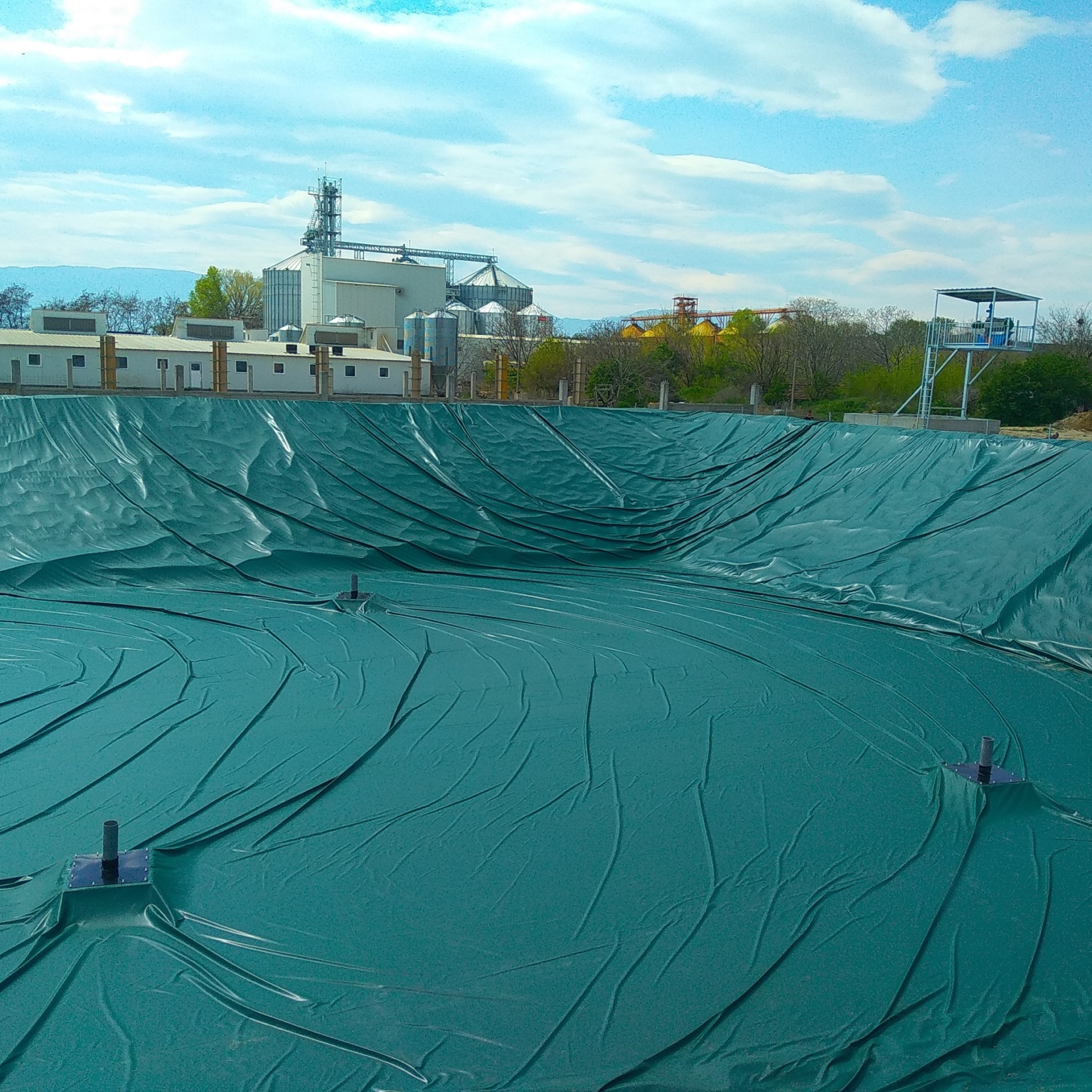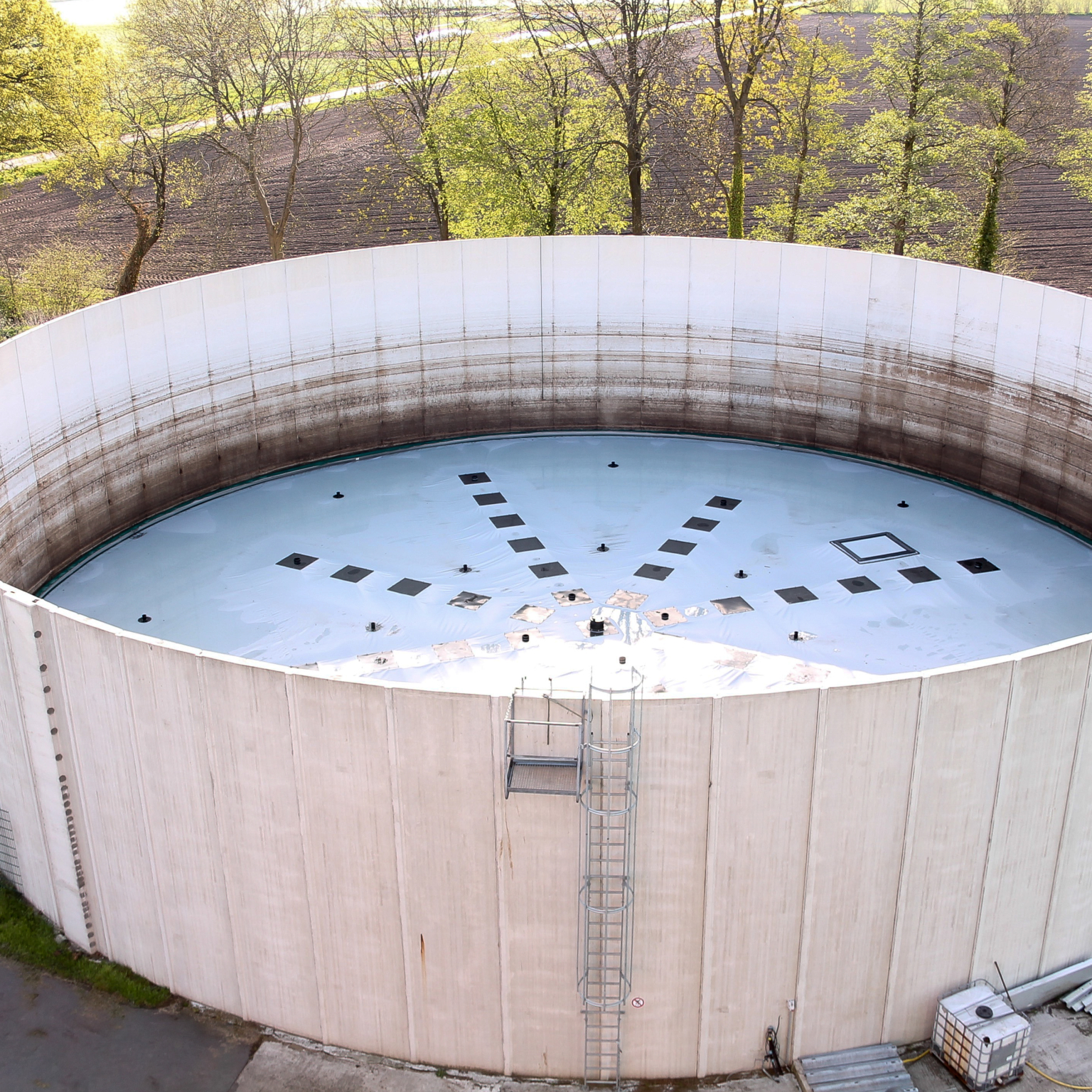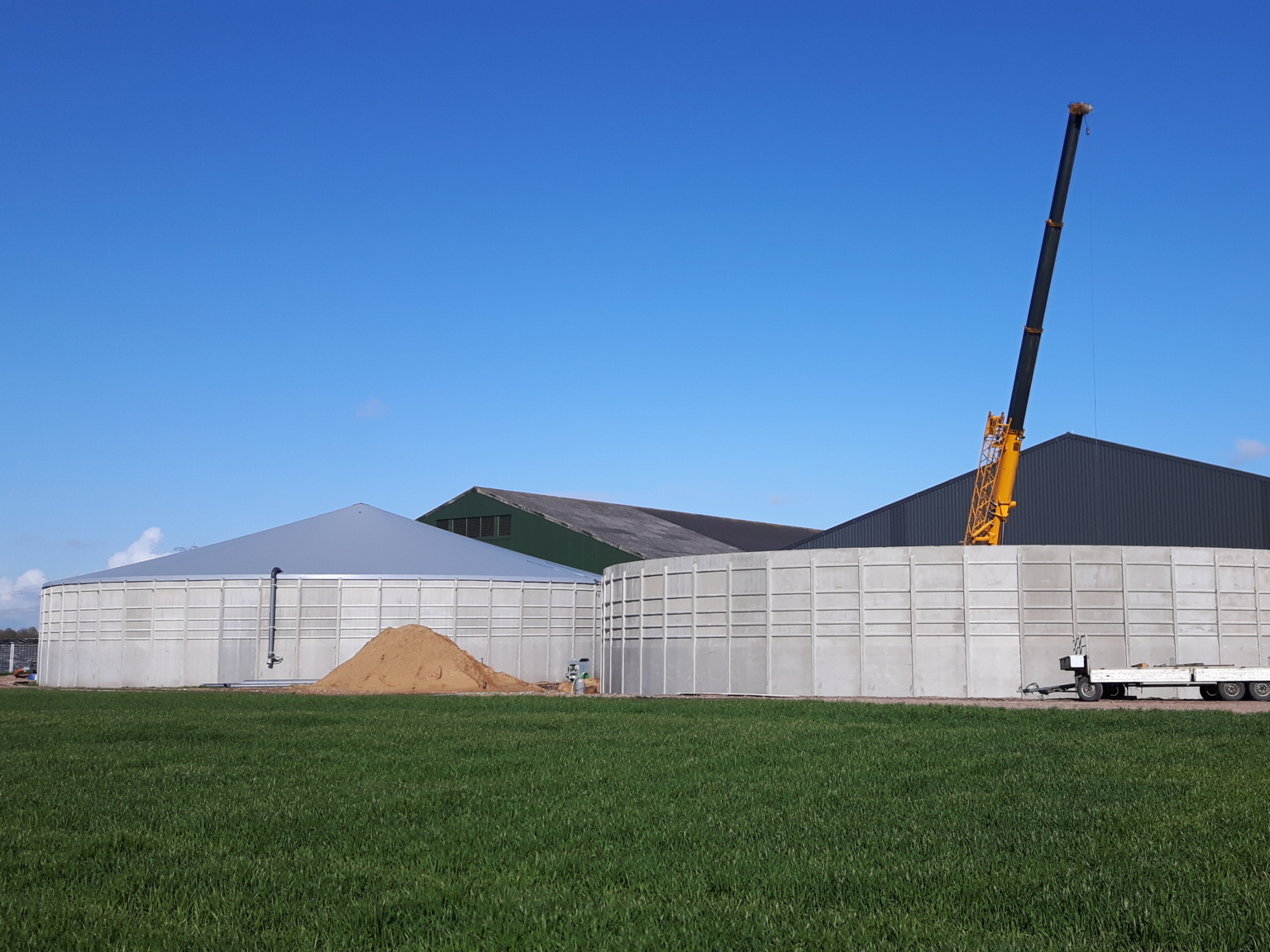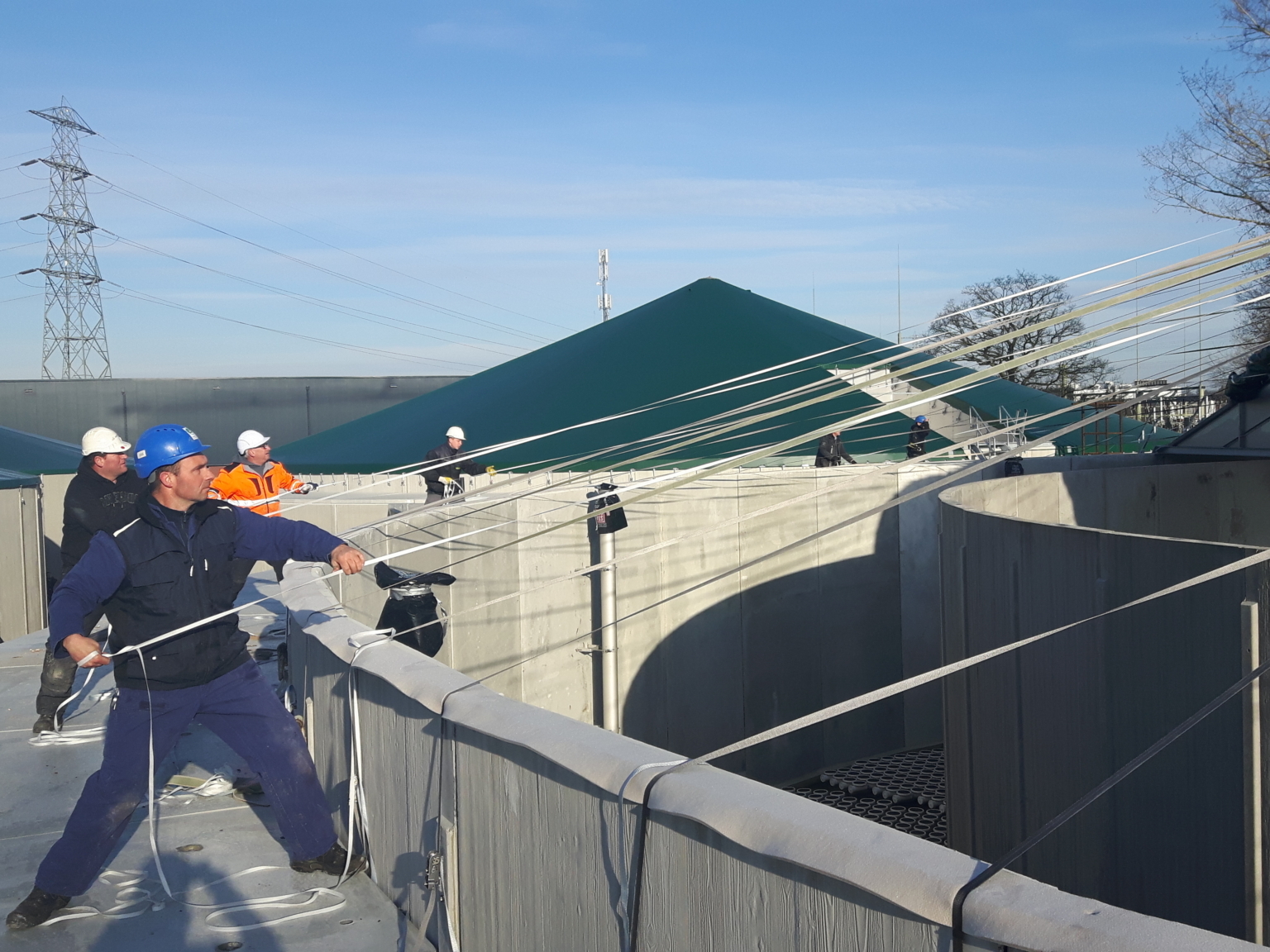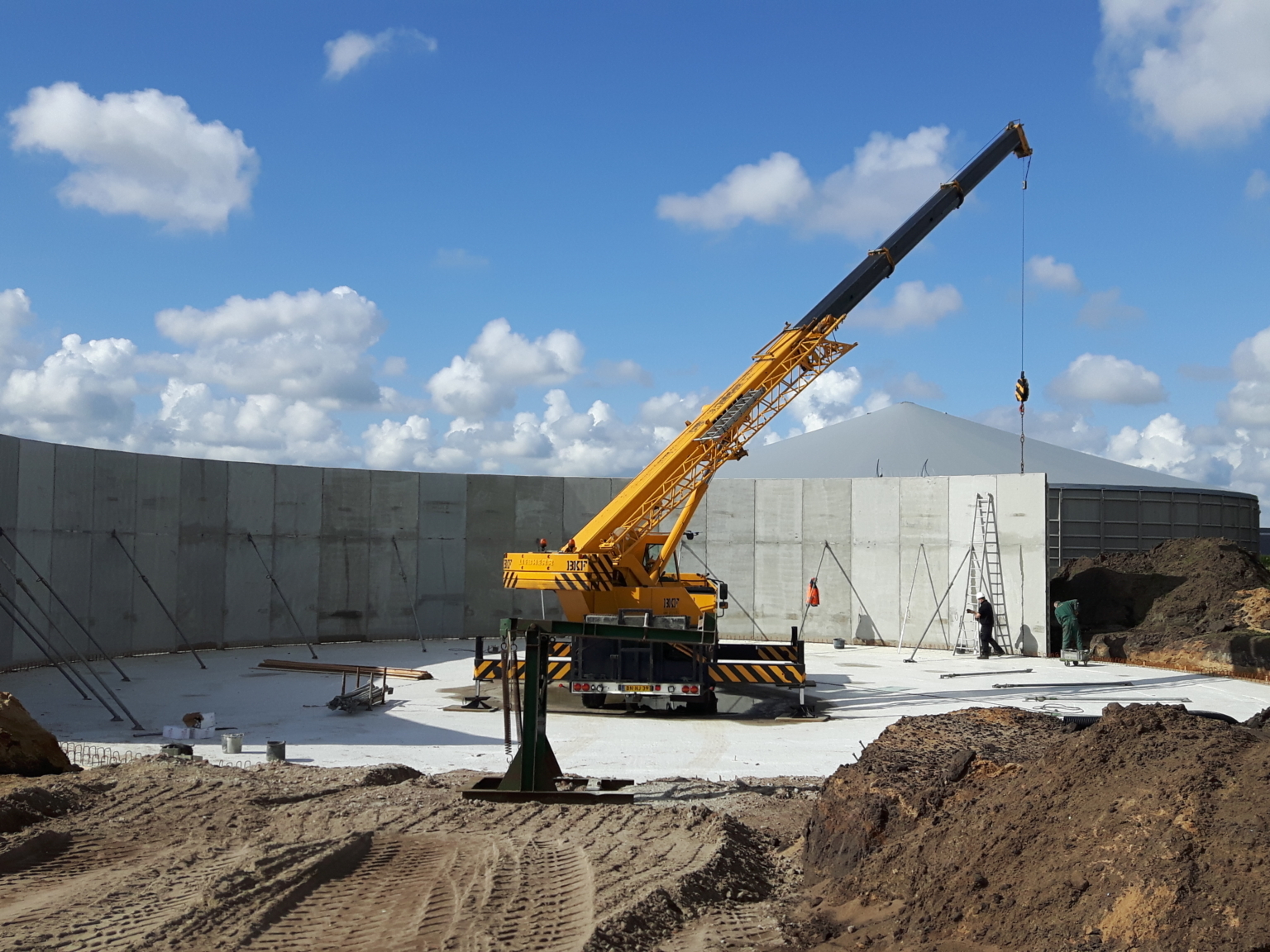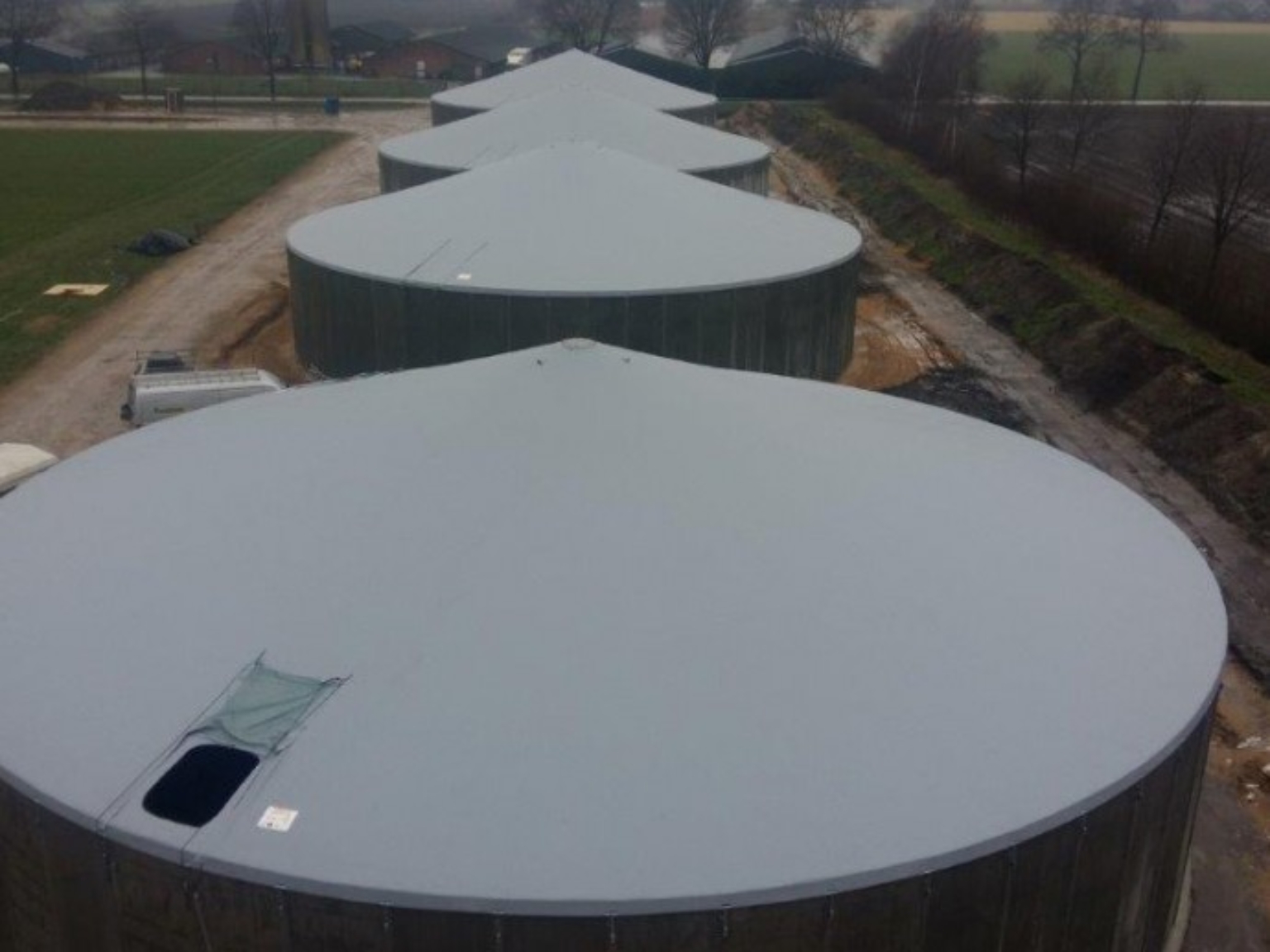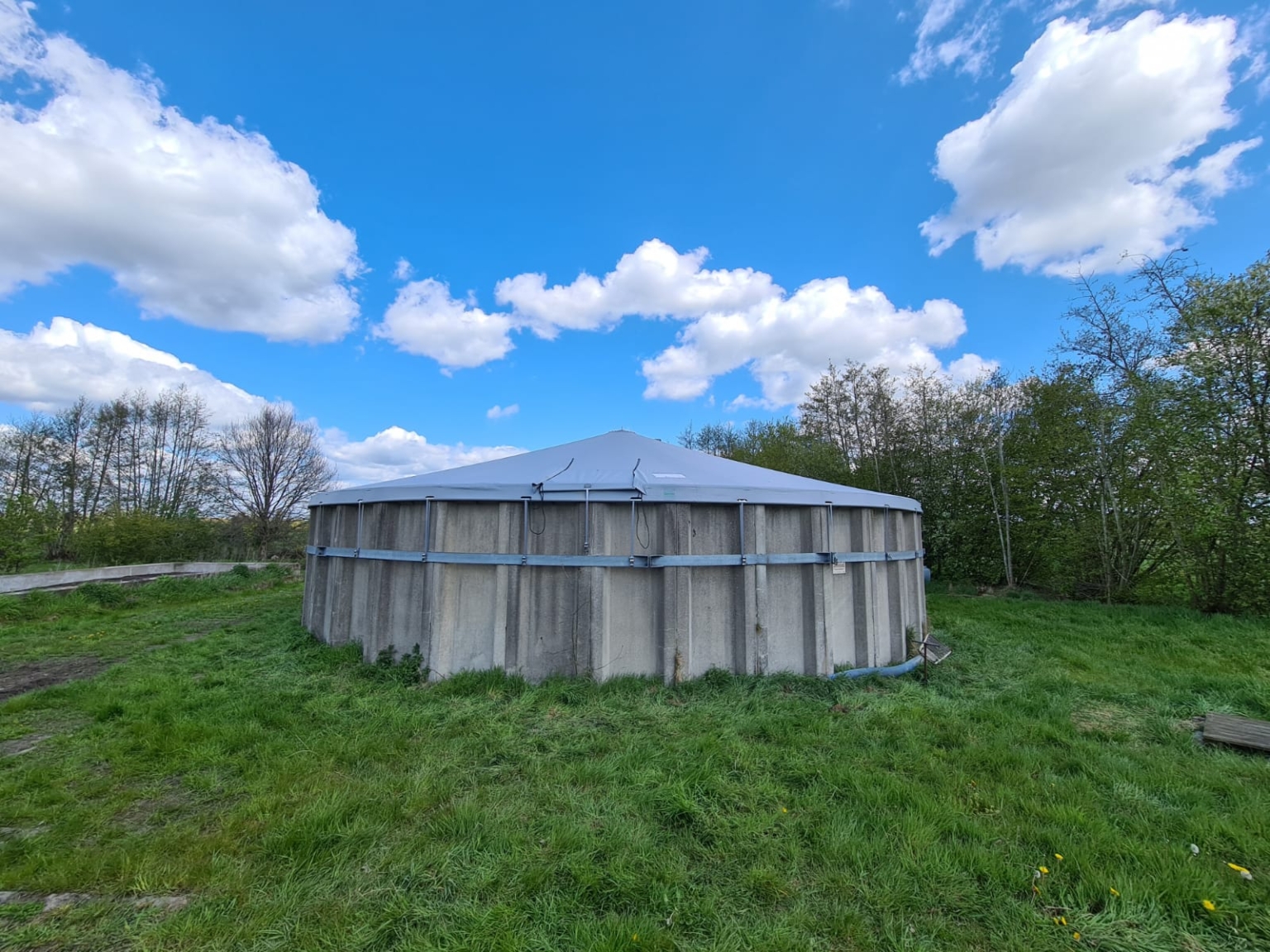Concrete silo
For substantial slurry storage needs, concrete silos present an ideal solution. Capable of being built to heights close to seven metres, they offer the ability to store significant amounts of slurry within a comparatively small footprint, unlike a slurry reservoir. Not only are concrete silos built to last and withstand impacts, but they also require minimal upkeep. If desired, situating part of the concrete silo below ground can help it blend more seamlessly with its surroundings.
Construction of a concrete slurry silo
The slurry silos are assembled using pre-tensioned prefabricated concrete components, which are then post-tensioned upon placement. The standard configuration includes an underground central filling/discharge system, a loading bay, and a tensioned cover. Optional accessories, like slurry mixers and extra pipework, can be added. Alternatively, a floating cover can be provided for the slurry silo instead of the tensioned cover.
- Large storage capacity
- Sustainable
- Low-maintenance
